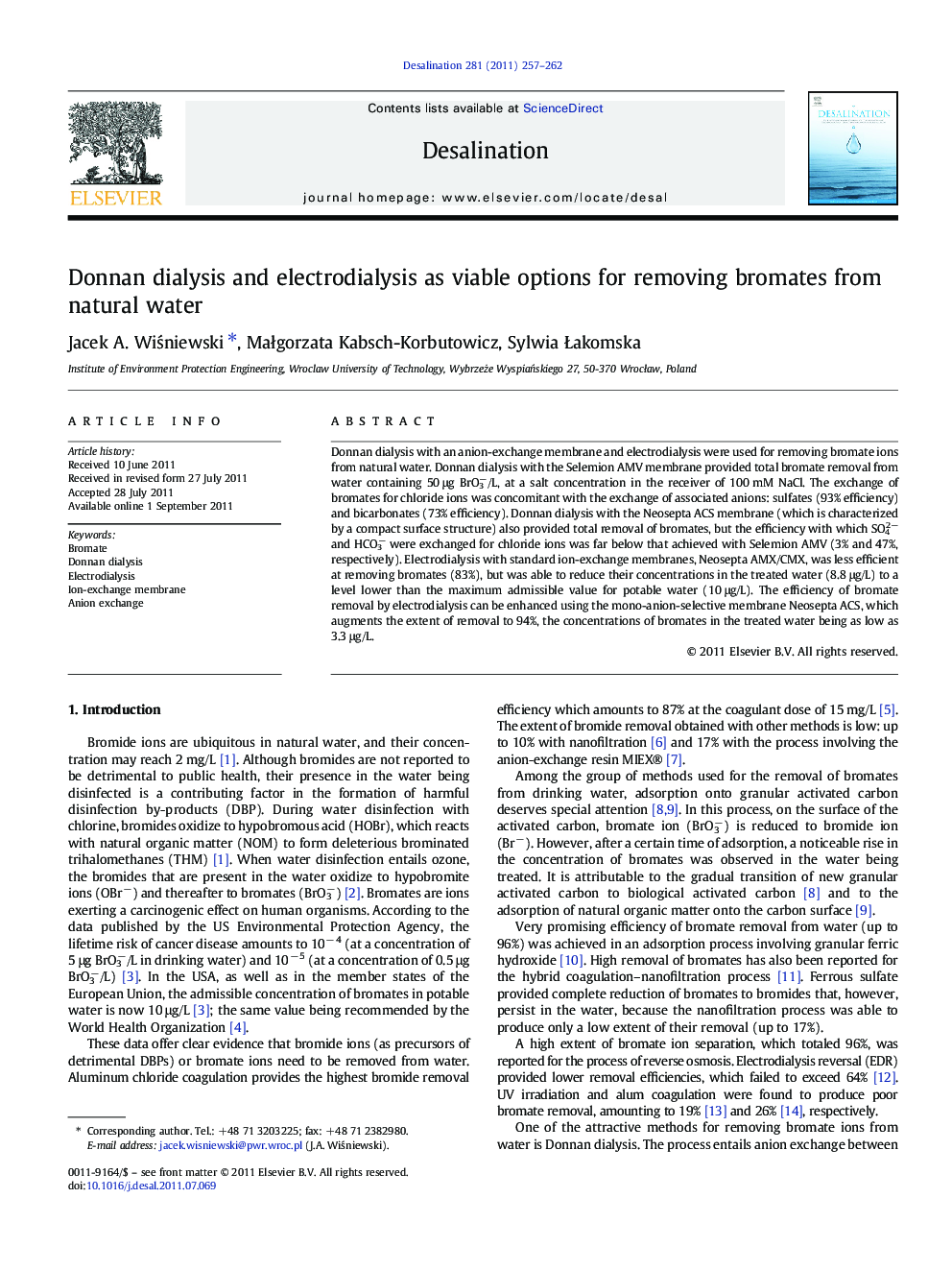| Article ID | Journal | Published Year | Pages | File Type |
|---|---|---|---|---|
| 624790 | Desalination | 2011 | 6 Pages |
Donnan dialysis with an anion-exchange membrane and electrodialysis were used for removing bromate ions from natural water. Donnan dialysis with the Selemion AMV membrane provided total bromate removal from water containing 50 μg BrO3−/L, at a salt concentration in the receiver of 100 mM NaCl. The exchange of bromates for chloride ions was concomitant with the exchange of associated anions: sulfates (93% efficiency) and bicarbonates (73% efficiency). Donnan dialysis with the Neosepta ACS membrane (which is characterized by a compact surface structure) also provided total removal of bromates, but the efficiency with which SO42− and HCO3− were exchanged for chloride ions was far below that achieved with Selemion AMV (3% and 47%, respectively). Electrodialysis with standard ion-exchange membranes, Neosepta AMX/CMX, was less efficient at removing bromates (83%), but was able to reduce their concentrations in the treated water (8.8 μg/L) to a level lower than the maximum admissible value for potable water (10 μg/L). The efficiency of bromate removal by electrodialysis can be enhanced using the mono-anion-selective membrane Neosepta ACS, which augments the extent of removal to 94%, the concentrations of bromates in the treated water being as low as 3.3 μg/L.
► Donnan dialysis offers complete removal of bromates from natural water. ► Anion-exchange process requires low NaCl concentration in the receiver (100 mM). ► Electrodialysis provides water with low bromate concentration (3.3 μg/L). ► Removal of bromates by electrodialysis is concomitant with water desalination.
